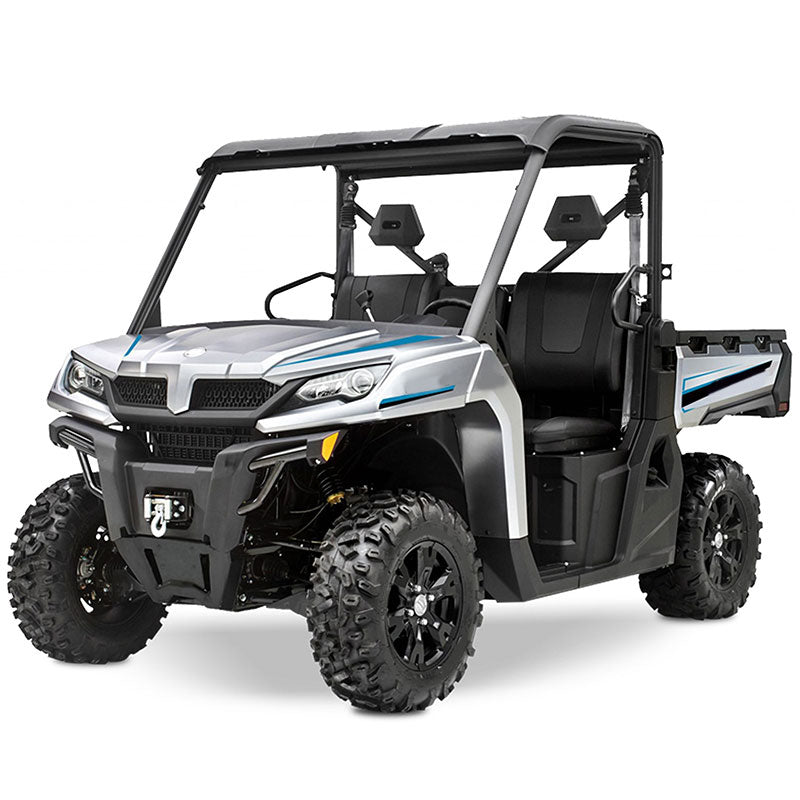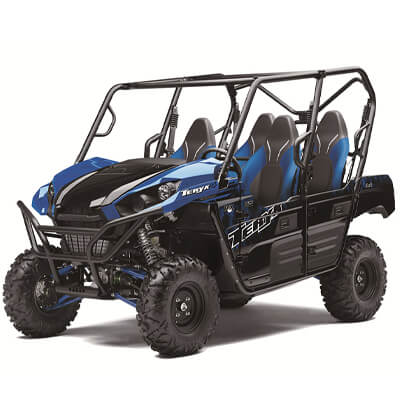How to Clean Your UTV Windshields?
Introduction
UTVs, also known as side-by-sides, are popular off-road vehicles used for recreation, farming, and other outdoor tasks. Keeping UTV windshields clean is crucial for ensuring good visibility and safe driving conditions. However, cleaning UTV windshields can be tricky depending on the windshield material. Today’s guide will shed light on how to clean your windshields of different materials and answer some key maintenance questions to keep your UTVs in good condition.
Understanding Different Types of UTV Windshields
Acrylic Windshields
Acrylic plastic windshields are lightweight, resistant to shattering, and inexpensive. However, they scratch easily and can develop hazy patches and yellowing over time with sun exposure.
Glass Windshields
Glass windshields provide superior optical clarity but weigh more. Automotive glass cleaners formulated to cut through oil, grease, and grime work well for cleaning glass windshields.
Polycarbonate Windshields
Nearly unbreakable polycarbonate windshields offer durability and scratch resistance. However, they are prone to clouding, staining, and fine scratches which obscure visibility.
Helpful choosing windshield info: Polycarbonate vs. Glass Windshields: Which Is Right for Your UTVs?
Preparation for Cleaning UTV Windshields
Inspect Windshield
Examine the windshield before cleaning for any cracks, cloudiness, or existing damage. Make note of heavily stained areas needing extra attention. Immediately replace cracked windshields.
Gather Supplies
For acrylic or polycarbonate, have plastic cleaners or mild detergents and soft microfiber cloths ready. Automotive glass cleaner and lint-free cloths suit glass windshields best. Avoid using paper towels or abrasive scouring pads.
How to Clean My UTV Windshields?
Follow these methods tailored to windshield material:
Acrylic Windshields
Rinse the windshield first with clean water if excessively dirty. Mix a small amount of plastic cleaner or baby shampoo with water in a spray bottle. Spray solution onto the windshield and use a soft cloth to gently wipe down, rinsing often. Buff dry with a microfiber cloth. Avoid using Windex or ammonia cleaners.
Glass Windshields
Spray automotive glass cleaner sparingly over the surface. Wipe clean using light pressure with a lint-free microfiber cloth. Flip the cloth frequently to a clean side. Rinse with water and squeeze off droplets. Repeat if needed for tough stains.
Polycarbonate Winshields
Apply polycarbonate cleaner to microfiber cloth first before gently wiping onto the windshield. Buff in light circular motions without applying pressure and flip to clean cloth area often. Rinse and air dry out of direct sunlight. Do not use paper towels.
Common Mistakes to Avoid When Cleaning Windshields
Improperly cleaning UTV windshields can lead to permanent damage. It is important to be aware of some common pitfalls:
Using Harsh Chemicals
Harsh chemicals like ammonia, abrasives, and corrosive acids can wear down windshield surfaces over time, making them more vulnerable to dirt buildup and challenging stains. These chemicals strip off protective coatings and leave tiny yet abrasive scratches in the material that obstruct clarity.
Exposing Windshields to Direct Sunlight
The heat and UV exposure from direct sunlight often lead to over-drying and streaking during the cleaning process. The sun's rays can accelerate chemical reactions from cleaners before having a chance to wipe them off. Temperature extremes also play a role, causing cleaning solutions to either freeze or dry out too quickly, leaving marks and residues.
Cleaning in Temperature Extremes
Frigid temperatures may lead to water freezing on the windshield, making it nearly impossible to rinse off cleaning solutions adequately. On the other hand, very hot conditions tend to dry out cleaners rapidly before they have a chance to effectively dissolve stubborn stains. Residue and marks left behind create an unsightly film that impairs visibility. For best results, clean windshields only when ambient temperatures are moderate.
Protective Measures for UTV Windshields
Implementing some ongoing protective habits prevents wear and tear on UTV windshields:
Applying Protective Coatings
Special UV-protective coatings formulated for acrylics and polycarbonates provide an added layer of defense against the elements. They resist clouding, yellowing, and cracking over months of sun exposure. Reapply these protective coatings every 6-12 months to replenish the UV-blocking properties.
Using Rain Repellent Treatments
Rain-repellent or hydrophobic treatments for glass windshields make water bead right off the surface with ease. This enhances visibility and safety during wet weather riding conditions when muddy water might otherwise obstruct the view. Reapply the rain repellent every 3-4 months to maintain its water dispersion properties.
Shielding When Not in Use
Prolonged sun exposure can deteriorate windshield materials over time. Shield the windshield plastic and glass from UV rays and dirt accumulation by storing your UTV covered indoors or using a protective vehicle cover when not in use for extended periods. This helps extend the clarity and longevity of the windshield.
Regular Gentle Wiping
Gently wipe the windshield clear after every single use once cooled, making sure to remove any splattered mud or dripping sap and tree matter. Dried-on debris often leaves stubborn stains. Wiping while fresh prevents buildup leading to more effortful cleaning later. This regular care makes routine deep cleaning much quicker too.
FAQs
Answering some common UTV windshield cleaning questions:
Can I use Windex on a UTV windshield?
Avoid using Windex or ammonia-based cleaners on acrylic or polycarbonate windshields as it can cause cracking and fogging over time. Use only mild detergents and plastic cleaners instead. Windex is safe for auto glass windshields.
Can I use Windex to clean the inside of my UTV windshield?
Do not use Windex or ammonia cleaners on the inside surface of acrylic or polycarbonate windshields, even if tinted. The fumes become trapped and accelerate crazing. Mild soap and water mixes are best for inside surfaces.
Can I use rubbing alcohol to clean my UTV windshield?
Avoid using rubbing alcohol on acrylic or polycarbonate windshields as it can cause damage over time. For glass windshields, a dilute alcohol solution may be acceptable for deep-cleaning tough oil stains in small sections - but test first.
How do I remove decals from a UTV windshield?
Carefully slice decal edges with a razor then gently heat with a hairdryer to soften glue residue before slowly peeling off. Use plastic cleaner and microfiber cloths to remove any leftover adhesive. Never scrape hard at acrylic or polycarbonate windshields.
Why does my UTV windshield turn yellow and cloudy?
Long-term sun exposure can cause UV damage, oxidation, and deterioration leading to yellowed, cloudy windshields over the years. Using UV-protectants and covered storage helps. Ultimately though, replacement is needed for badly damaged windshield clarity and safety.
How do I get rid of water spots on my windshield?
For light mineral spots, use a 50/50 vinegar and water solution with a microfiber cloth to wipe down then rinse clean. To remove more engrained water stains, try buffing with automobile polish appropriate for your windshield material then re-apply protective treatments.
What is the best way to clean bug guts off a UTV windshield?
Cover the impacted area with a wet microfiber towel for 2-3 minutes to soak and soften the mess, then gently wipe side-to-side. Follow up with windshield-specific cleaners and rinse thoroughly with water, repeating steps if needed to remove lingering residue.
How often should I clean my UTV windshield?
Clean windshields thoroughly at least every few months with mild detergent and rinse well. Wipe the windshield clear after every single use to prevent dirt buildup. Reapply protective treatments 2-3 times per year. More frequent cleaning maintains clarity.
What supplies should I keep in my UTV to clean the windshield?
Carry a spray bottle of water, microfiber cloths, compact plastic cleaner, and glass cleaner if you have a glass windshield. Disposable wet lens wipes are also handy for cleaning on the go if the windshield gets dirty during your drive.
How to Remove Windshield Haze?
Polycarbonate windshield haze can be removed using polish made specifically for polycarbonate. Microfiber cloths also help remove minor hazing on acrylics and glass by gently buffing in circular motions with plastic or glass cleaner. Avoid using abrasives.
How To Clean Your UTV Windshields On The Road?
Pack pre-moistened lens wipes for acrylics and polycarbonates and glass cleaner with microfiber cloths for glass windshields. Carefully wipe clean the windshield whenever dirt or mud obscures visibility during your trip. Carry additional water to pre-rinse.
Conclusion
Keeping side by side windshields clean through proper methods preserves optical clarity for safe driving and extends the windshield’s longevity through preventive care. Always inspect windshields prior to cleaning and use specialized cleaners and gentle techniques suited for the windshield material whether acrylic, glass, or polycarbonate. Taking protective measures also enhances windshield performance during outdoor use. Following manufacturer guidance and addressing cleaning challenges promptly allows UTV owners to enjoy many miles of clear and unobscured views from their vehicle’s windshield.













Leave a comment